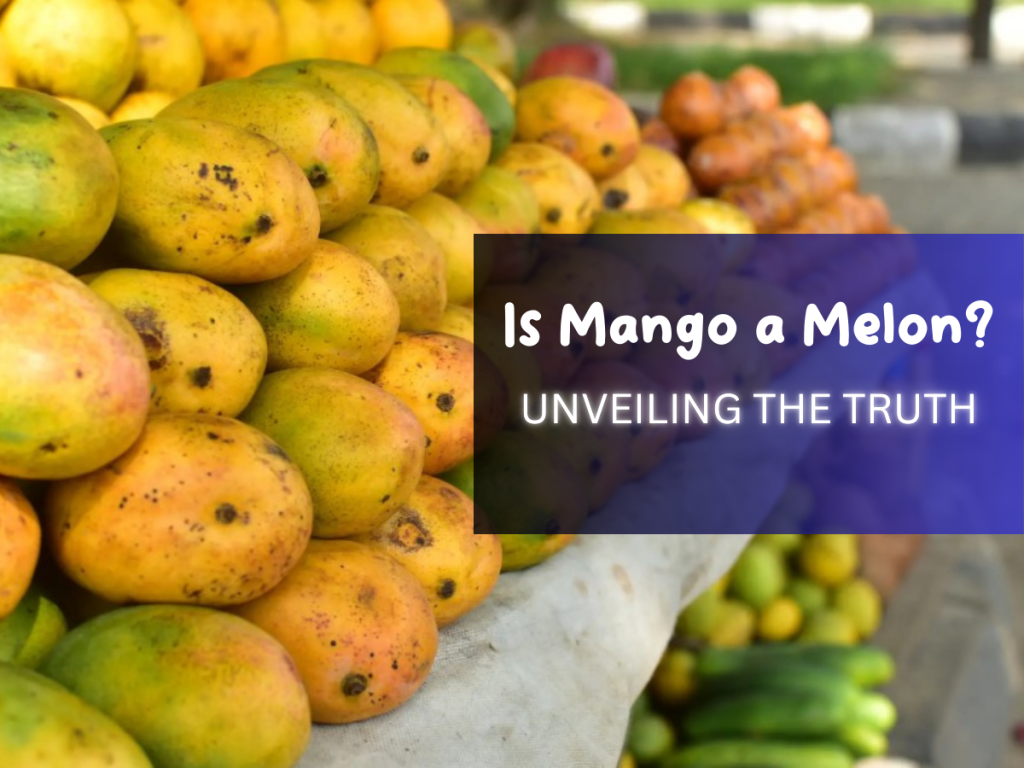Introduction:
When it comes to fruits, the world presents a colorful and diverse array. Some fruits are familiar, while others might leave us questioning their identity. One fruit that often sparks curiosity is the mango. With its unique flavor, vibrant color, and juicy flesh, many wonder if a mango is a melon. In this article, we will delve into the botanical classification of fruits, examine the characteristics of mangoes and melons, and uncover the truth behind the question: Is a mango a melon?
Botanical Classification:
To understand the nature of fruits, it is crucial to examine their botanical classification. Botanists classify fruits into various categories, including berries, drupes, pomes, and melons.
Melons, scientifically classified as Cucumis melo, belong to the Cucurbitaceae family. They are typically large, juicy fruits with a fleshy interior and a thick rind. Examples of melons commonly known are cantaloupes, honeydews, and watermelons.
Conversely, Mangoes belong to the Anacardiaceae family and are scientifically known as Mangifera indica. They fall under the category of drupes, which are fruits with a single seed surrounded by a fleshy mesocarp. Other examples of drupes include peaches, plums, and cherries.

Characteristics of Mangoes:
Mangoes are tropical fruits renowned for their distinct flavor, fragrance, and vibrant color. They have smooth, thin skin that ranges from green to yellow, orange, or red, depending on the variety. The juicy flesh of a mango is typically golden or orange and envelops a large, flat, and fibrous seed in the center.
People praise mangoes for their sweet and tangy taste, representing a delightful balance of acidity and richness. The flavor profiles of mangoes can vary, encompassing tropical and citrusy notes, hints of peach, pineapple, and even floral undertones. Culinary creations, desserts, beverages, and even standalone consumption use mangoes’ versatility.
Characteristics of Melons:
Melons, as mentioned earlier, are part of the Cucurbitaceae family. They usually manifest as large fruits with a thick, rough, smooth rind and juicy, sweet flesh. Various cultivars of melons offer different shapes, sizes, and colors.
Cantaloupes, one of the most popular melon varieties, feature a netted, rough skin and orange flesh with a sweet aroma. Honeydews, in contrast, possess a smooth, pale green rind and a pale green to white meat, boasting a milder flavor. With their striped or mottled green skin, watermelons are known for their vibrant pink or red flesh and refreshing, sweet taste.
Conclusion
Though mangoes and melons share some similarities, they differ in their botanical families and exhibit distinct characteristics. Mangoes are drupes, while melons belong to the melon family (Cucurbitaceae). While both fruits offer delectable experiences and enjoy global popularity, their classifications set them apart.
To answer the question, “Is a mango a melon?” the answer is no. Mangoes and melons differ in their botanical classifications, with mangoes being drupes and melons belonging to the Cucurbitaceae family. While mangoes and melons may share similarities regarding their juiciness and sweetness, their categories and distinct characteristics separate them.
Therefore, the next time you bite into a ripe, juicy mango, you can appreciate it for what it truly is—a delicious tropical drupe that adds flavor to your palate. Read article about Dragon Tail Plant and Calathea Setosa in Avi Hoffman Garden.







